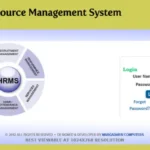Legal disputes are an inevitable part of modern society — whether you’re dealing with a contract gone wrong, an accident injury, or a consumer fraud claim. But the moment you consider taking legal action, a critical question arises: “How do I actually file a lawsuit?”
Fortunately, there are accessible and informative legal platforms like Law Scroller that break down these complex procedures into easy-to-understand, step-by-step guides. One of the standout resources from this U.S.-based legal site is its detailed Lawsuit section, which provides invaluable insights into the litigation process.
In this article, we’ll explore what filing a lawsuit entails in the United States, what you can expect from the legal process, and why Law Scroller is quickly becoming a trusted destination for legal clarity and empowerment.
Understanding the Lawsuit Process: The Basics

A lawsuit is a legal action initiated by one party (the plaintiff) against another (the defendant), typically to seek compensation, enforce rights, or resolve disputes. Lawsuits can be filed in civil courts or federal courts depending on the nature and scope of the case.
The Lawsuit section of Law Scroller provides a thorough roadmap for anyone unfamiliar with the court system — from when to file, how to choose the right court, to how the proceedings play out.
When Should You File a Lawsuit?
The decision to sue should not be taken lightly. Law Scroller advises evaluating the following before taking legal action:
- Legal Standing: Do you have a right to sue?
- Damages Incurred: Are your losses significant enough to pursue compensation?
- Evidence: Do you have supporting documents, witnesses, or proof?
- Statute of Limitations: Is the time limit for filing a lawsuit still valid?
The website emphasizes that if the conflict can be resolved via negotiation or alternative dispute resolution (ADR), it’s worth exploring before proceeding to court.
Types of Lawsuits Explained on Law Scroller
The lawsuit section neatly categorizes legal claims into various types, including:
● Personal Injury Lawsuits
Involving car accidents, slip-and-fall incidents, or medical malpractice. Law Scroller explains how negligence must be proven and what kind of compensation victims can seek.
● Breach of Contract
These lawsuits stem from one party failing to meet obligations stated in a contract. Law Scroller details how to establish breach, calculate damages, and defend against claims.
● Employment Disputes
Wrongful termination, workplace discrimination, unpaid wages — Law Scroller outlines legal remedies for employees and employers.
● Consumer Protection Lawsuits
From defective products to fraudulent advertising, consumers can sue for restitution and punitive damages.
● Small Claims Court Cases
Law Scroller also explains when it’s better to file in small claims court — typically when the amount in dispute is relatively low, usually under $10,000.
How to File a Lawsuit: Step-by-Step Process
One of the most valuable features of Law Scroller is how it breaks down the complex process of filing a lawsuit into simple steps. Here’s an overview based on their Lawsuit section:
1. Determine the Right Court
Jurisdiction matters. Is your issue a state-level civil matter or a federal case? Law Scroller guides users on how to determine the correct venue for their lawsuit.
2. Draft the Complaint
The complaint is a formal document outlining your allegations, the legal basis for the claim, and what relief you seek. Law Scroller explains what must be included and how to format it correctly.
3. File the Complaint and Pay Filing Fees
This involves submitting your complaint to the clerk of court and paying a fee (typically ranging from $100–$400). Law Scroller gives helpful tips to avoid common mistakes.
4. Serve the Defendant
Proper “service of process” ensures the defendant is formally notified. Law Scroller outlines the acceptable methods (e.g., personal delivery, certified mail, professional process server).
5. Await the Defendant’s Response
The defendant must file an answer — or risk a default judgment. Law Scroller explains how responses, counterclaims, and motions work in practice.
6. Pretrial Motions and Discovery
This stage involves information gathering. Law Scroller highlights how both parties request evidence and file motions to dismiss or resolve certain parts of the case early.
7. Trial and Verdict
If the case proceeds to trial, a judge or jury hears arguments, evaluates evidence, and renders a decision. Law Scroller gives insights into courtroom procedures and appeal rights.
Benefits of Legal Guidance from Law Scroller
There’s no shortage of legal information online — but finding a platform that’s structured, up-to-date, and written in plain English is rare. Law Scroller succeeds on all fronts. Here’s why:
✅ Clarity for the Common Reader
Legal jargon is replaced with digestible language, examples, and checklists.
✅ Free Resource for the Public
All content is available without subscription fees, making it perfect for low-income individuals who can’t afford legal advice upfront.
✅ Reliable, U.S.-Focused Content
Law Scroller specializes in American law — making it more relevant for readers navigating the U.S. legal system.
✅ Great for Students and Self-Litigants
If you’re studying law or representing yourself in court (known as “pro se” litigation), Law Scroller serves as an excellent study tool and reference.
Real-Life Application: A Lawsuit Example
Let’s say you were injured due to a neighbor’s negligence — their dog wasn’t leashed and bit you on your property. Based on Law Scroller’s Lawsuit section:
- You’d determine the statute of limitations for personal injury in your state.
- Prepare and file a complaint with the appropriate civil court.
- Have the neighbor served with the complaint.
- Enter discovery, gathering medical bills, witness accounts, and dog ownership records.
- Proceed to mediation or trial, depending on whether a settlement is reached.
LawScroller.com walks you through each of these steps in greater detail, giving confidence to potential plaintiffs who might otherwise hesitate due to lack of knowledge.
Conclusion: Know the System, Know Your Rights
Filing a lawsuit may feel overwhelming at first — but with the right information, it becomes manageable. Thanks to comprehensive legal resources like Law Scroller, individuals now have access to the legal education they need to make informed decisions.
Whether you’re a plaintiff preparing to sue or a curious citizen looking to understand your rights, the platform’s Lawsuit section is a powerful tool to navigate the legal process with clarity and confidence.
Empower yourself legally. Explore Law Scroller today — because justice begins with knowledge.

Hi, I am Kapil Kumar, founder and chief editor of indiasvibes.com, a platform delivering the latest updates on business, finance, entertainment, and sports. With a passion for insightful storytelling, I am and my team ensures our readers receive accurate and engaging content.

